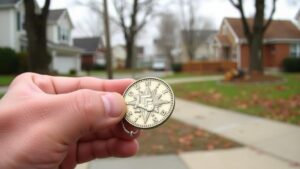Detecting for Silver Coins in Agricultural Fields Cleared for Development
Detecting for Silver Coins in Agricultural Fields Cleared for Development
The detection of silver coins in agricultural fields undergoing development has emerged as an intriguing domain that intersects archaeology, numismatics, and modern technology. This article explores the methodologies, challenges, and case studies associated with locating silver coins in these unique environments, providing insight into the essential techniques and tools utilized in the process.
Understanding the Context: Agricultural Fields and Historical Significance
Agricultural fields often hold rich historical narratives, particularly those that have been continuously cultivated for centuries. These sites can yield various artifacts, including silver coins, which are vital for understanding economic exchanges, trade routes, and societal structures of past civilizations. Archaeological surveys reveal that many significant coins were lost through trade, gift-giving, or even everyday exchanges; therefore, the detection of silver coins can offer invaluable insights into historical contexts.
Detection Methods: Tools and Techniques
Several methods are employed in detecting silver coins in agricultural fields, each with its distinct advantages and limitations. Below are some of the primary techniques:
- Metal Detectors: The most commonly used tool in detecting coins, metal detectors can efficiently locate metallic objects buried beneath the surface. High-frequency detectors are particularly effective at identifying silver due to its unique conductivity profile.
- Geophysical Surveys: Techniques such as ground-penetrating radar (GPR) and electromagnetic induction can detect anomalies in the soil that may indicate buried objects. e methods are non-invasive and can provide a broader context of underlying archaeological features.
- Magnetometry: This method detects variations in the earths magnetic field caused by metal objects. It can be especially useful for detecting ferrous materials alongside silver coins, providing researchers with a comprehensive picture of the sites past usage.
Challenges in Detection
Despite the advanced tools available, several challenges persist in the detection of silver coins in agricultural fields. These challenges include:
- Soil Composition: Variations in soil types can affect the efficiency of detection methods. For example, clay soils often produce moisture levels that can obscure signals from metal detectors.
- Debris and Modern Artifacts: Fields may be littered with modern debris, such as aluminum cans and other metallic refuse, leading to false signals or masking genuine historical artifacts.
- Legal and Ethical Considerations: Detecting in publicly or privately owned agricultural fields raises questions of legality and ethics, especially regarding ownership and the preservation of historical artifacts.
Case Studies: Successful Detecting Missions
Numerous successful detection missions can inspire practitioners in the field. For example:
- The Yuba River, California: In 2017, cultural resource management teams employed metal detectors along the river’s banks, where extensive gold mining had occurred. Their efforts led to the discovery of various silver coins dating back to the 19th century, providing insights into the socio-economic conditions of the mining era.
- The Hutton Field Project, UK: Excavations at a field slated for construction revealed Late Roman silver coins. Researchers initially conducted a geophysical survey, followed by targeted metal detection, which confirmed the presence of significant coin hoards, shedding light on trade activity in the region.
Real-World Applications of Findings
The implications of detecting silver coins extend beyond mere collection; they play a crucial role in historical research, education, and community engagement. For example:
- Informing Local History: Findings can contribute to educational programs within local communities, offering workshops that discuss the historical significance and methodology of archaeological work.
- Guiding Conservation Efforts: Discovering mint-condition coins often leads to calls for conserving the surrounding environment, further ensuring that sites are preserved for future generations.
- Economic Development: Archaeological finds may enhance tourism opportunities, enabling communities to create heritage trails or museums centered around local history.
Actionable Takeaways for Aspiring Detecters
For those interested in detecting silver coins in agricultural fields, consider the following actionable strategies:
- Become familiar with local laws regarding metal detection and artifact recovery to ensure ethical practices.
- Invest in high-quality metal detection equipment and learn its features thoroughly, particularly focusing on discrimination settings to filter out modern junk.
- Engage with local historical societies or archaeology groups to gain knowledge and potentially collaborate on projects that promote awareness of the archaeological significance of your finds.
Conclusion
Detecting silver coins in agricultural fields cleared for development represents not just a hobby but a gateway to understanding our historical tapestry. By employing methodical and ethical approaches, enthusiasts can uncover fragments of history that offer insights into the lives of those who inhabited these lands long before. As technology continues to evolve, so too will the techniques and opportunities for discovery in this dynamic field.



